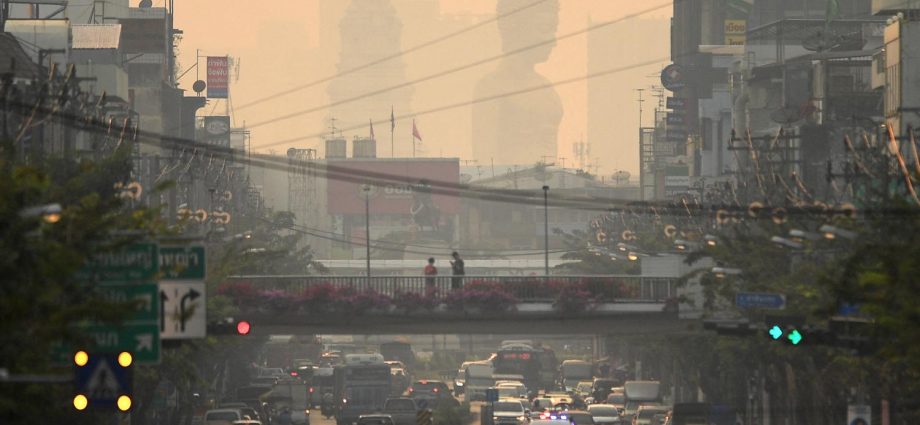Schools close as air quality poses threat

Haze pollution forced several schools in Bangkok to close on Friday as the Public Health Ministry reported more than 370,000 patients had suffered from illnesses caused by inhaling ultra-fine dust particles (PM2.5).
Forty-three provinces, including Bangkok and its suburbs, remained blanketed in smog, with PM2.5 dust levels above the government’s safe limit of 50 microgrammes per cubic metre (μg/m³) on Friday, according to the Pollution Control Department (PCD).
As of 7am, PM2.5 levels ranged between 34-154ug/m3 in most areas in the North, 29-96μg/m³ in most areas in the Northeast, 48-117μg/m³ in most areas in the Central Plains and the West, 32-79μg/m³ in four areas in the East, and 10-25ug/m³ in the South.
In Bangkok and surrounding areas, atmospheric PM2.5 ranged from 54-119μg/m³, forcing several schools to close temporarily as a result.
Chulalongkorn University Demonstration Secondary School in Pathumwan district announced on Facebook on Thursday that it would be closed on Friday due to concerns over the respiratory impact on its students. Classes would be conducted online, with the school expecting to reopen on Monday.
Jindabamrung School in Khan Na Yao district took similar action in announcing a Friday closure and Monday reopening on its own Facebook page.
The Thawi Wattha district office also suggested that seven schools under the supervision of the Bangkok Metropolitan Administration in the district do the same.
The Education Ministry has set up coordination centres to monitor the PM2.5 situation in several provinces.
Schools can exercise discretion in their decisions to close if the dust levels are found to be unsafe, according to the ministry.
Air pollution reports can be obtained on Air4Thai.com as well as on the Air4Thai and AirBKK apps.
According to the PCD’s air and noise quality management division, fine dust levels remained in Bangkok and surrounding provinces on Friday due to accumulated dust and stagnant air.
Central Bangkok and the northern and southern Thon Buri areas were under close watch.
In the North, both the upper and lower areas were under similarly close watch in 17 provinces, particularly on Friday.
According to the Public Health Ministry, a total of 376,165 people suffered from health ailments of some kind caused by air pollution this week, an increase of 163,491 from the previous week.
Of these patients, more than 165,000 suffered from respiratory diseases, 80,248 from skin diseases and 70,206 from eye inflammation.
Narong Aphikulvanich, deputy permanent secretary for the Ministry of Public Health, said that public health emergency operation centres have been set up in 14 provinces affected by PM2.5 to deal with the problem in a more systematic manner.
They include Bangkok, Lamphun, Chiang Mai, Sukhothai, Nonthaburi, Pathum Thani, Ayutthaya, Saraburi, Ang Thong, Samut Sakhon and Ratchaburi.
According to Iqair.com, the US AQI (air quality index) value for Chiang Mai was at 164, and the level of PM2.5 was at 84.7μg/m³ as of 11am on Friday, which exceeded standard safety levels and could have adverse health impacts.
As a result, Chiang Mai became the 14th most polluted city in the world briefly, higher than Bangkok, which had a US AQI value of 88.

